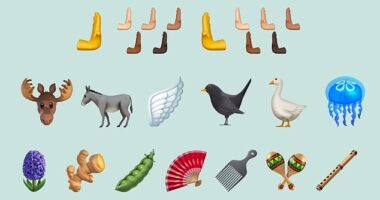
These trippy optical illusions baffle the best of us, as they seem to completely transform the colour of an object.
But scientists have now unveiled the truth about so-called ‘simultaneous contrast’ illusions – and it turns out they may not be as complicated as we initially thought.
New evidence from the University of Exeter suggests the head-scratching puzzles come as a result of our limited nervous system.
This follows years of back-and-forth as experts have debated whether illusions stem from neural processing in the brain, the eyes or even a psychological phenomena.
‘Our eyes send messages to the brain by making neurones fire faster or slower,’ said Dr Jolyon Troscianko, who co-led the study.


Experts reveal that head-scratching illusions come as a result of our limited neural networks. Pictured: The grey bar is a consistent shade of grey yet appears darker on the right and lighter on the left
‘However, there’s a limit to how quickly they can fire, and previous research hasn’t considered how the limit might affect the ways we see colour.’
Researchers explored an array of illusions that appear to change the colour of objects.
In one picture, a grey bar is shown against the background of a black-to-white gradient background.
Even though the rectangular bar is a block-shade of grey, it appears lighter on the left and darker on the right due to the gradient in the background.
This is called simultaneous contrast, where dark surroundings make targets appear lighter, and vice-versa.
This phenomenon is also displayed in another image, with two rectangles overlaying a background of black and white stripes.
While both rectangles are the same shade of grey, they again seem different, which is purely due to their position in the image.
Illusions such as this demonstrate ‘colour constancy’, which refers to our colour-perceiving abilities.
Scientists believe our ‘limited bandwidth’ of human perception can jumble up colour when it’s overwhelmed by too many at once.
This is also shown in another illusion of two Rubiks Cubes that both have what appear to be yellow and blue tiles on their top surfaces.
However, the ones that look yellow on the left are in fact a grey colour that is identical to the blue tiles on the right.
Accounting for these limits, experts developed a model which they believe simulates our experience of looking at patterns.
This device, known as the Spatiochromatic Bandwidth Limited (SBL) model, successfully predicted how humans perceive illusions in 35 cases.


Both rectangles appear to be different shades of grey but they’re actually the same colour. This is a result of ‘simultaneous contrast’ an illusion caused by a mix of conflicting colours


This is also shown in another illusion of two Rubiks Cubes that both have what appear to be yellow and blue tiles on their top surfaces. However, the ones that look yellow on the left are in fact a grey colour that is identical to the blue tiles on the right
‘This throws into the air a lot of long-held assumptions about how visual illusions work,’ Dr Troscianko said.
‘Our model shows how neurones with such limited contrast bandwidth can combine their signals to allow us to see these enormous contrasts, but the information is “compressed” – resulting in visual illusions.
‘The model shows how our neurones are precisely evolved to use of every bit of capacity.
‘For example, some neurones are sensitive to very tiny differences in grey levels at medium-sized scales, but are easily overwhelmed by high contrasts.
‘Meanwhile, neurones coding for contrasts at larger or smaller scales are much less sensitive, but can work over a much wider range of contrasts, giving deep black-and-white differences.’
Dr Troscianko believes these findings shed light on the popularity of high-definition televisions.
He explained that contrasts found outdoors are most easily perceived by our brains and less trippy as a result.
‘Modern high dynamic range televisions create bright white regions that are over 10,000 times brighter than their darkest black, approaching the contrast levels of natural scenes,’ he said.
‘How our eyes and brains can handle this contrast is a puzzle because tests show that the highest contrasts we humans can see at a single spatial scale is around 200:1,’ he said.
Now, the model could be used to explore the perception of humans and animals further, with some species wildly varying in their ‘bandwidth’ of colour.
‘Aside from predicting colour appearance the SBL model highlights comparatively unexplored trade-offs in visual systems,’ the authors wrote in their study, published in PLoS Computational Biology.










